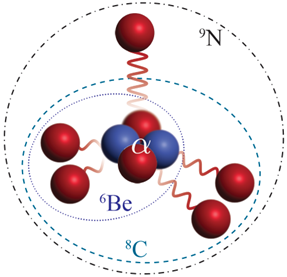
The “Nested Doll” Nucleus Nitrogen-9 Stretches the Definition of a Nucleus to the Limit
Nitrogen-9 has only two neutrons to its seven protons and decays to an alpha particle by emitting five of its protons in stages.

Nitrogen-9 has only two neutrons to its seven protons and decays to an alpha particle by emitting five of its protons in stages.
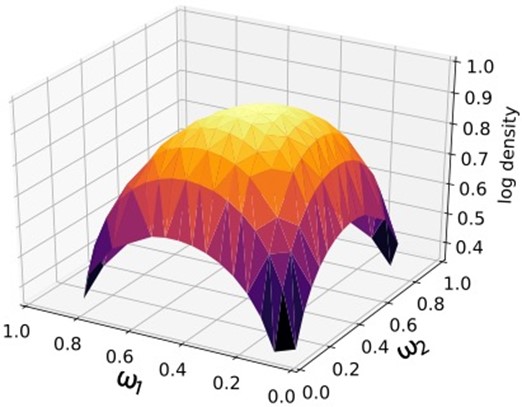
Bayesian statistical methods help improve the predictability of complex computational models in experimentally unknown research.
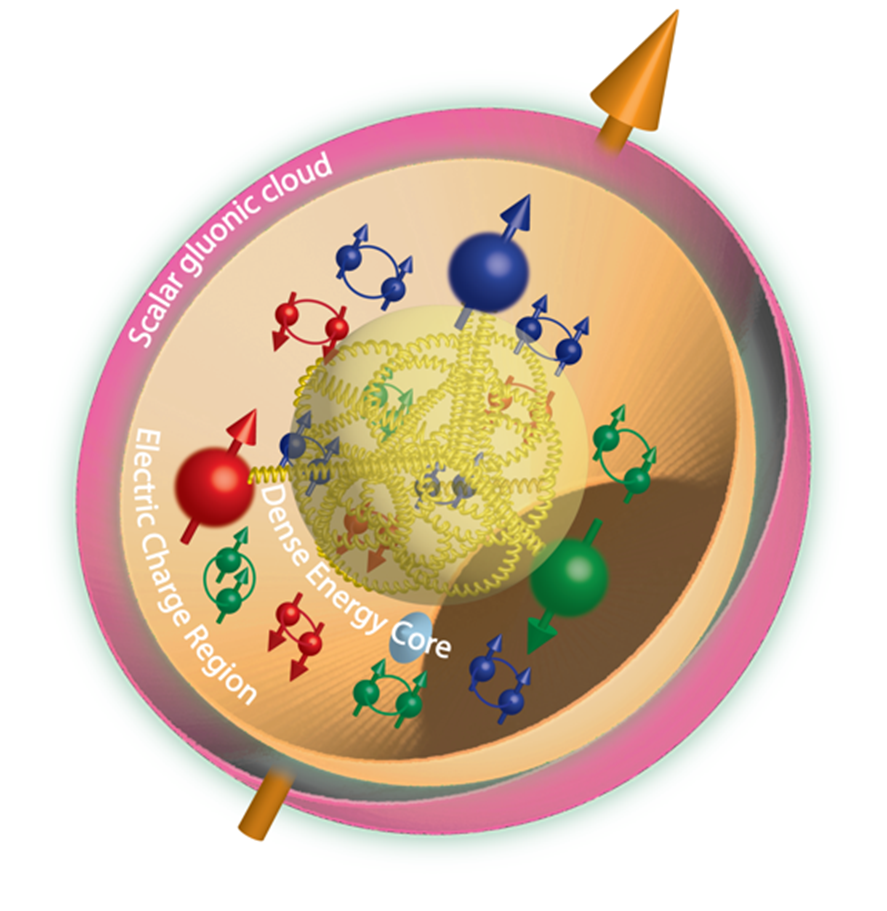
Nuclear physicists have found the location of matter inside the proton that comes from the strong force - a fundamental force that holds protons together.
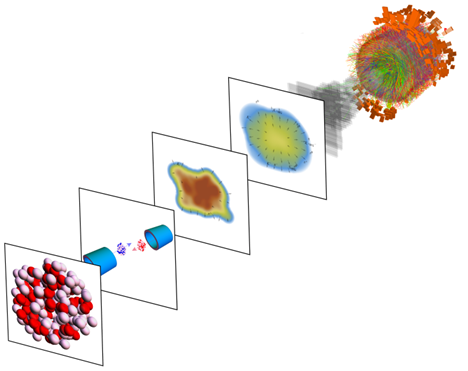
Researchers determined the neutron skin of lead-208 from experimental data collected in lead-lead collisions at the CERN Large Hadron Collider.

The Project 8 and He6-CRES collaborations use a new technique to set an upper limit on neutrino mass and prepare to test the nature of the weak force.
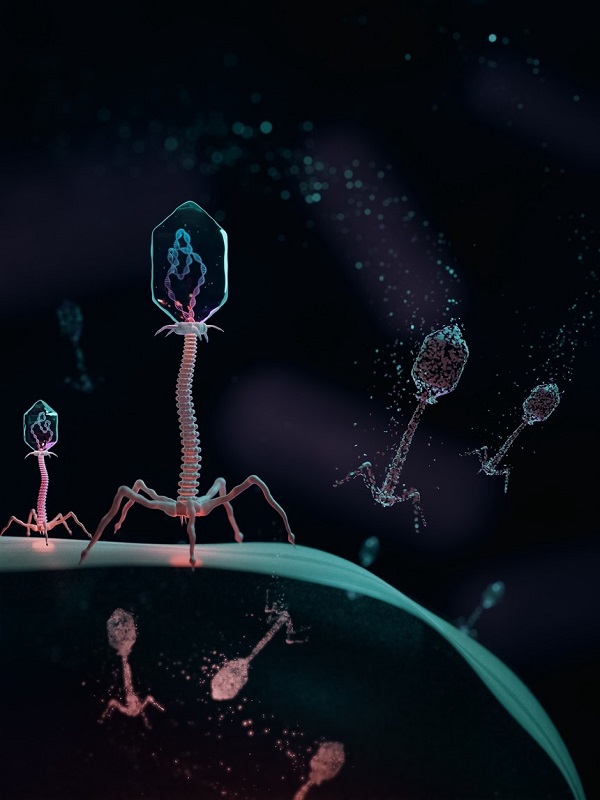
Scientists engineered a model bacterium's genetic code to make it virus-resistant and unable to exchange genetic material or grow without special media.
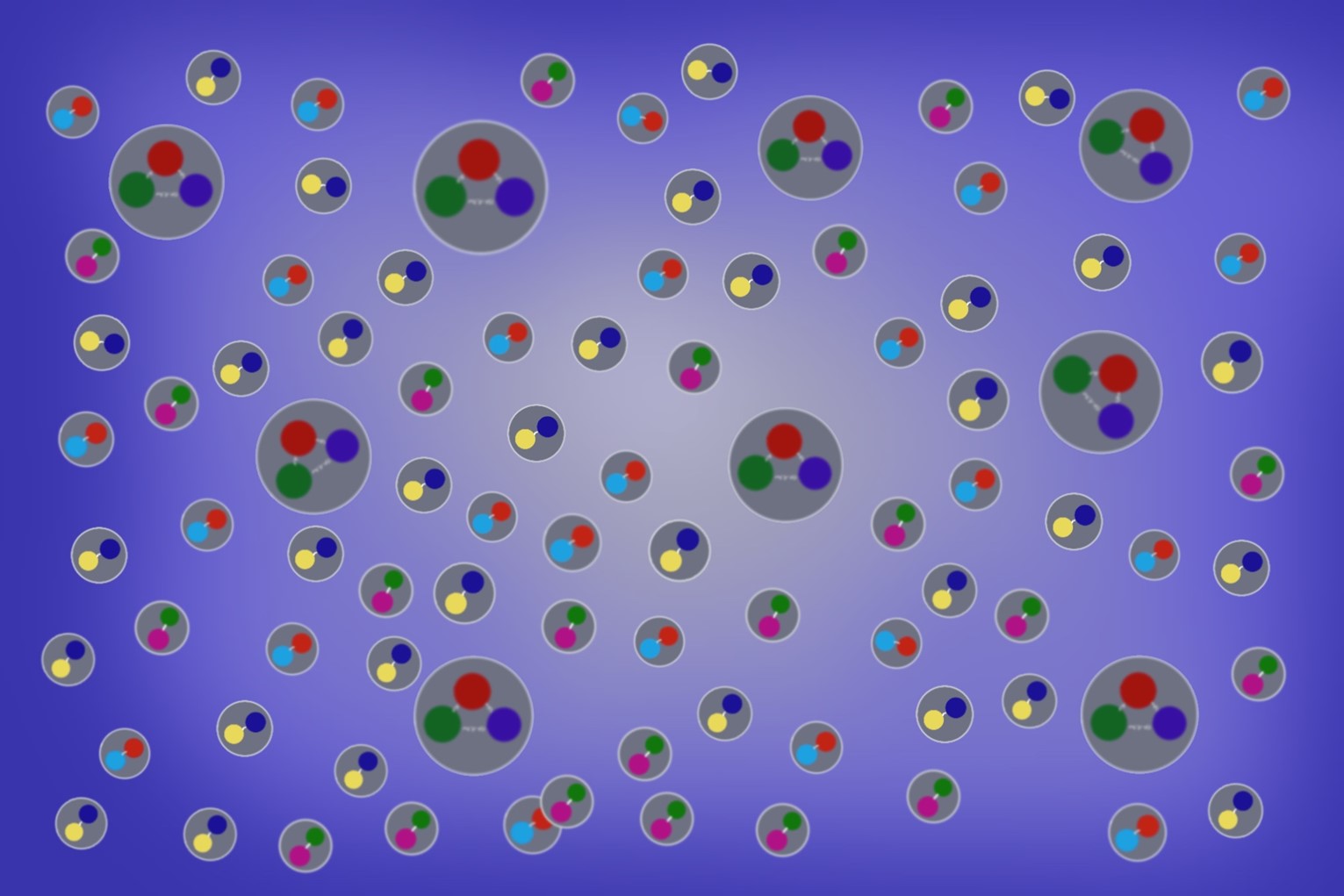
Scientists translate predictions of hydrodynamics into experimentally observable particle patterns.
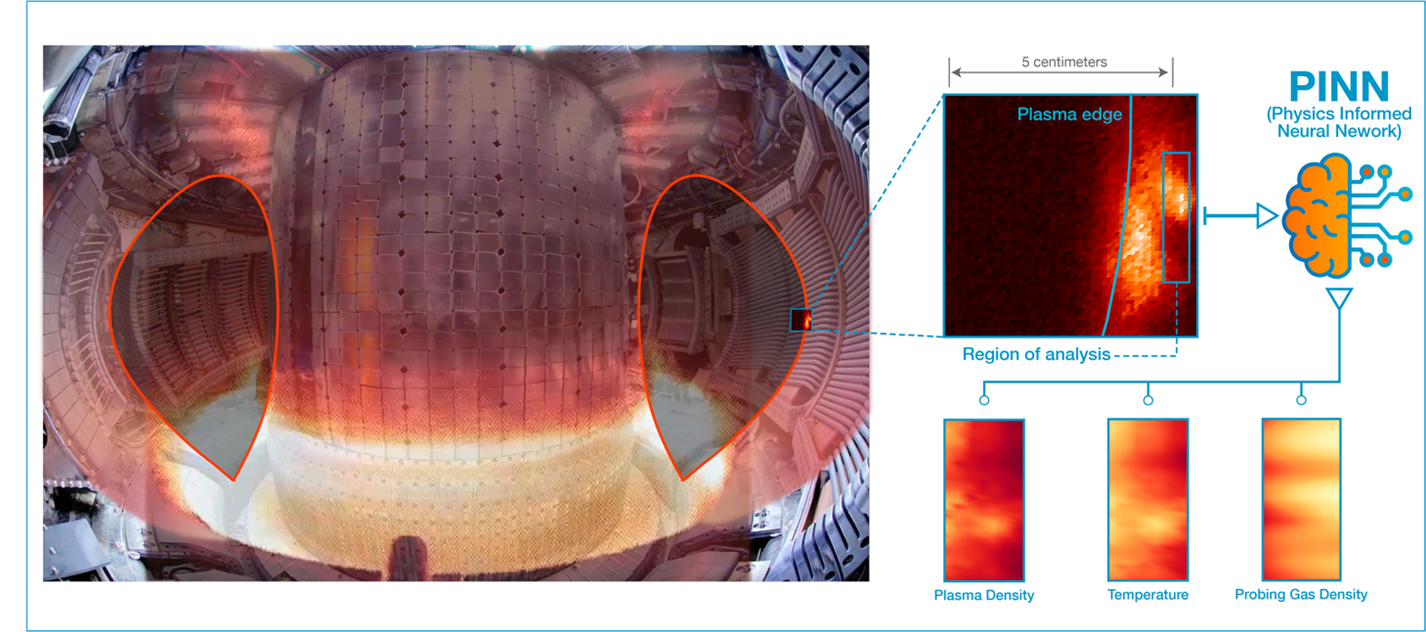
Neural networks guided by physics are creating new ways to observe the complexities of plasmas.
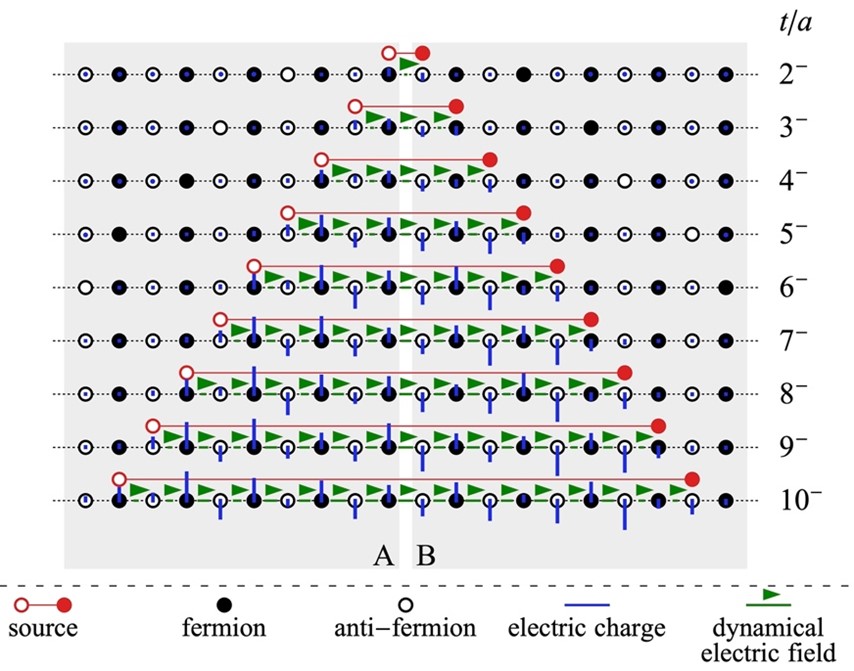
Quantum simulations reveal the presence of entanglement among the quarks produced in high energy collisions.
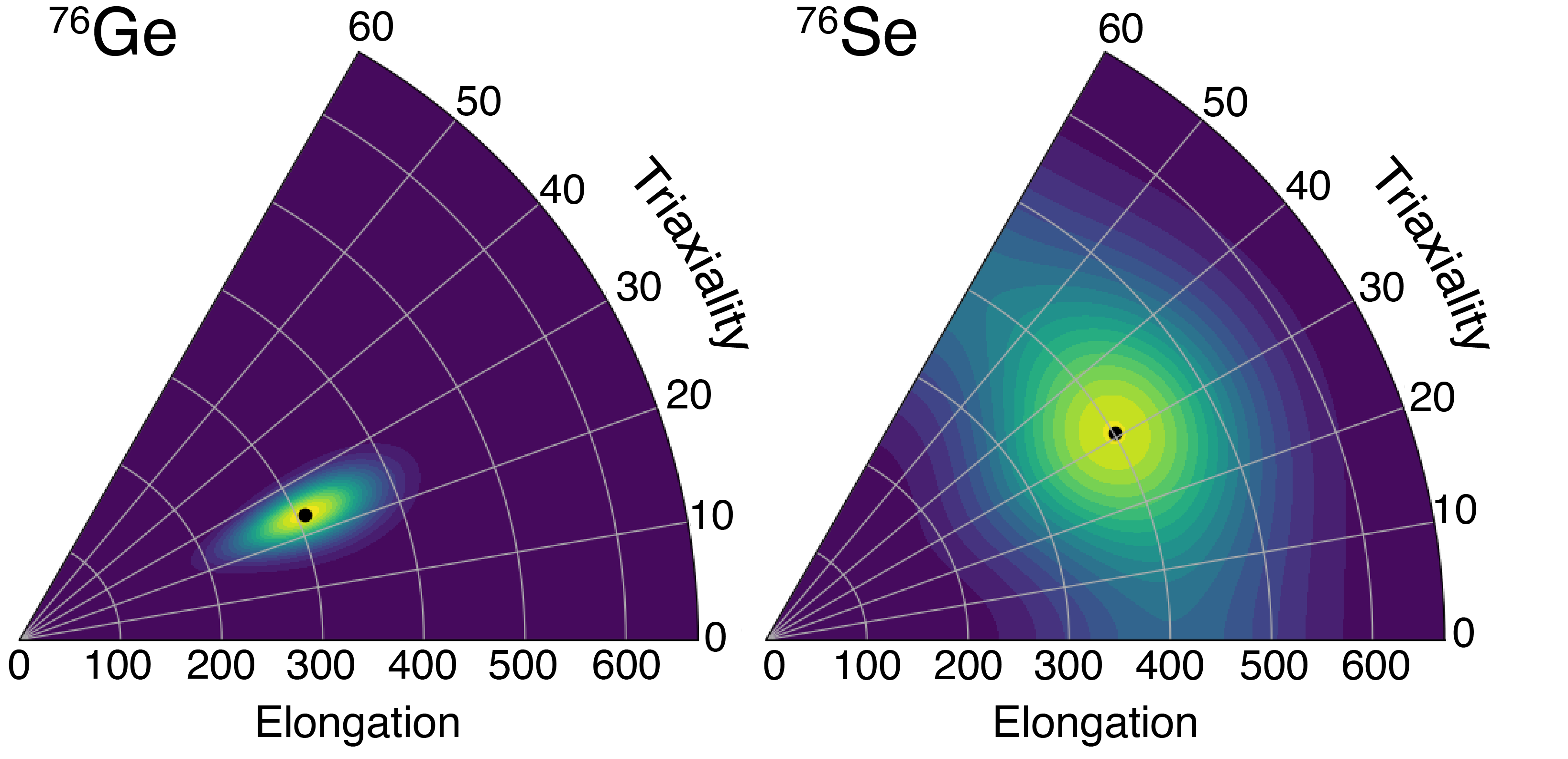
Scientists investigate neutrinoless double beta decay through neutrino mass and the nuclear structure of germanium-76.
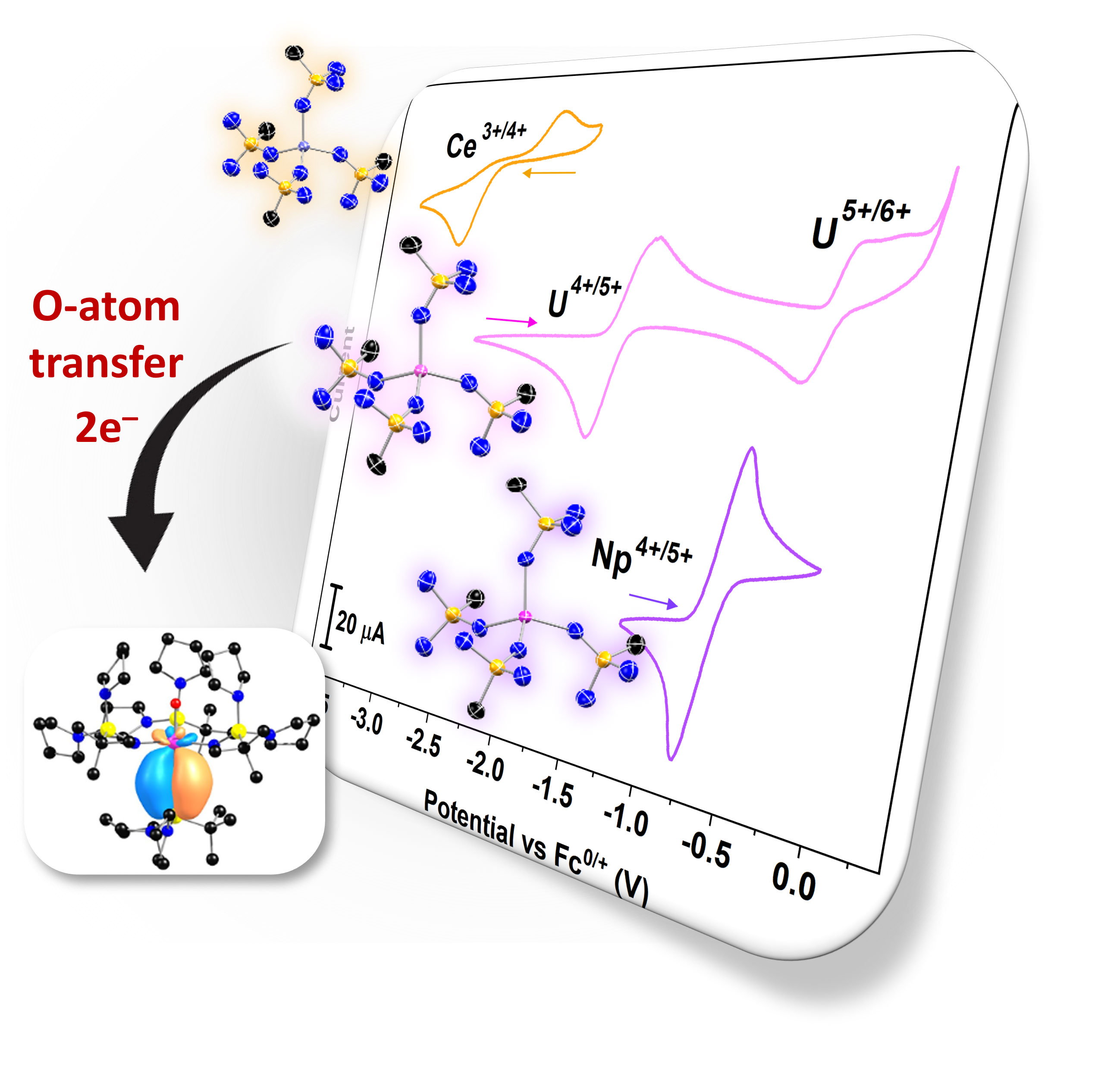
Ligand design and electrochemical studies pave a new path toward stable high-valent mid-actinide complexes.

A newly discovered excited state in radioactive sodium-32 has an unusually long lifetime, and its shape dynamics could be the cause.